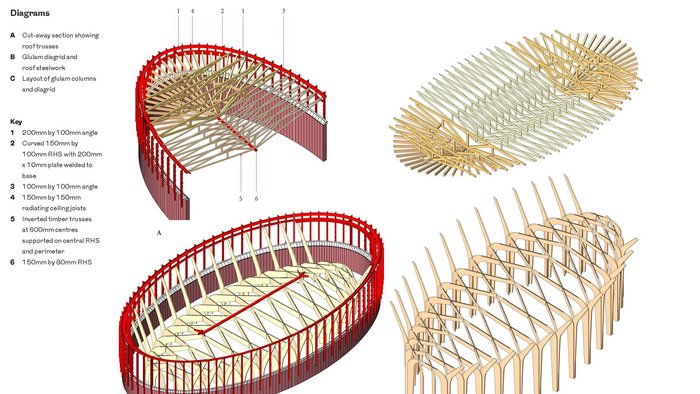Winner: Theo Chair
One of the primary aims in designing this chair was to make it lightweight, allowing users easily to stack and link large numbers. This simple, elegant design in laminated timber suits a wide range of environments. Up to 30 chairs can be stacked on a trolley and wheeled through a standard-height doorway, and they are light enough to be comfortably stackable while linked in rows of three. But they are also robust, passing level three severe contract testing.
Every part of the chair was designed with the qualities of wood and the technologies used in its manufacture in mind
The thin, bent ply backrest is designed to flex locally and will act as a spring that allows the rest of the chair to flex, dissipating load. The design lends itself to the use of timber; from inception to realised object, the intention was always to create a wooden chair. Because of this every part of it was designed keeping both the qualities of wood and the technologies used in its manufacture in mind.
The design is versatile. In addition to the attractive natural finish, the chair is available in a range of stains and bright solid colours. There is also an optional seat pad, designed to follow the contour of the chair.
The judges described this as ‘a remarkable piece of design and manufacturing’, calling it a successful piece of engineering in wood, in which the detailing was very well resolved.
Furniture client/owner: Chorus Furniture
Design: Pengelly Design
Wood species used: Oak and beech from Hungary
Highly commended, Otter Surfboards
Otter engraved Storyboard with words to show how it harvests local trees to make the boards
The judges considered these two surfboard designs as a single entry, praising the ‘exceptional application of fairly traditional woodworking’. Because the boards are so light, they add a unique dimension to the design, using ‘wood’s best properties – that it is natural, beautiful, strong and light’.
Otter uses a skin and frame technique to make its boards. Storyboard was conceived as a ‘skin off’ board to display the approach and the company engraved it with words to show how it harvests local trees to make the boards.
Otter X National Trust was made as part of the National Trust Neptune Coastline campaign, using a tree harvested at the Trust’s Trelissick Garden (inset). Cupressus Macrocarpa would not be the normal choice for a board, because it is heavier than western red cedar, but the result was a beautiful, characterful – and usable – board.
Otter X National Trust and The Storyboard (combined entry)
Wood species used: Local Cupressus Macrocarpa, birch plywood (Otter X National Trust), Cornish Western red cedar (Storyboard)
Holland Park chair, Ercol Furniture
Joyce cabinet, Pinch
Clyde side table, Pinch
Han chair, Gabbertas Studio
